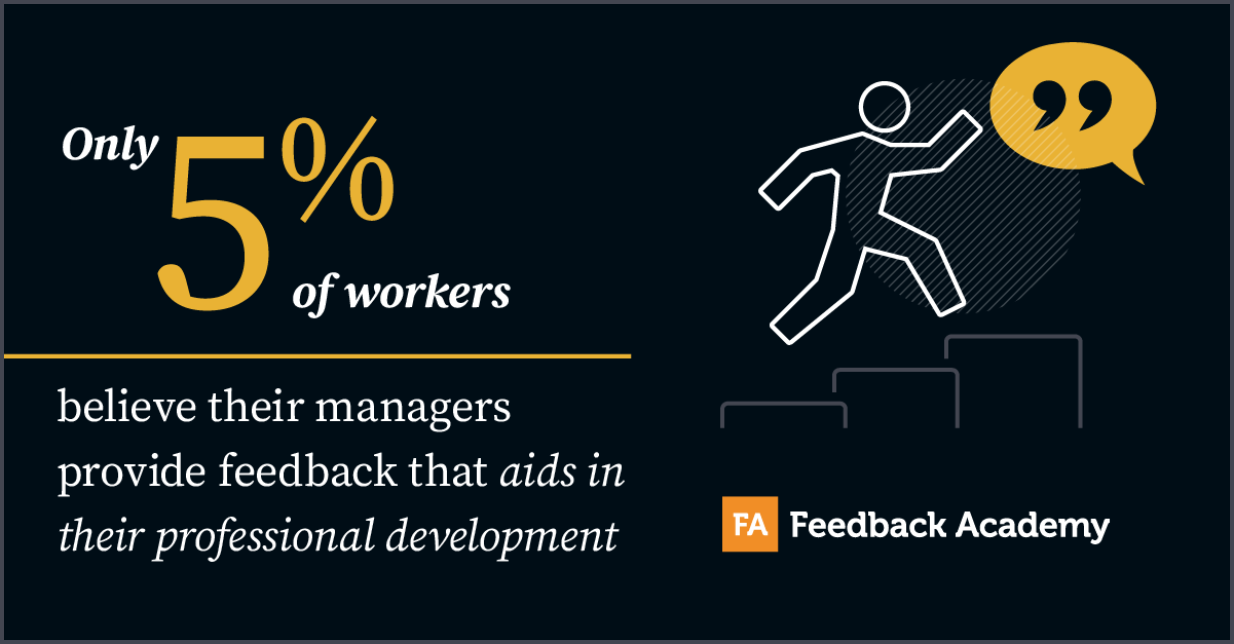Is Feedback the Antidote to Quiet Quitting and The Great Resignation?

Quiet quitting and The Great Resignation have become an increasingly serious threat to the productivity and sustainability of American companies. Is it possible that the answer to these problems has been sitting right in front of us all along?
The great resignation and quiet quitting are very real.
Much has been written about the Great Resignation and, more recently, the trend being referred to as “quiet quitting.” In case you’ve been wondering whether these are merely inventions of the business press trying to find something new and interesting to write about, wonder no more. The evidence that’s out there removes any doubt that these phenomena are very real. The Boston Consulting Group noted in the Harvard Business Review that some of their clients are seeing 30% attrition in certain job roles and that some plants have had 100% turnover since 2020. (1) Their findings align with broader data from the U.S. Bureau of Labor Statistics, which show that from 2009 to 2019 the number of people voluntarily quitting their jobs rose an unprecedented .10 percentage points each year. Workers held tight in 2020 but as soon as they sensed the pandemic was receding, the exodus returned, with 47 million Americans quitting in 2021 – the highest number ever.
While people have been leaving their jobs in droves, those left behind have found a different solution to their dissatisfaction: quiet quitting. Quiet quitting is just another phrase for disengaging, which is to say, still showing up for work but only doing the bare minimum needed to squeak by. While it’s not entirely clear whether this is a new phenomenon, study after study has shown that it is a substantial one. For example, in one 2021 study, Gallup found that only 34% of employees were engaged at work and a full 16% were actively disengaged meaning, presumably, that they were actively trying (as in, spending energy they could have been spending on work) to disengage. These numbers were up from the prior year. Other studies put the percentage of disengaged workers closer to 70%.
The great resignation and quiet quitting are bad for business.
So, the Great Resignation and quiet quitting are real and widespread, but why should we care? In addition to the increasing difficulty in finding qualified talent, there are other important concerns and costs. When people are only doing their jobs half-heartedly, they often produce low-quality work and provide low-quality service. This can degrade the product/service experience for customers, degrade brand reputation, increase operating costs, and generally cause friction for both the top and bottom lines. Quiet quitting can damage company culture, setting a low standard of performance for teams as a whole and causing resentment among those fully invested workers who are giving it their all.
Workplaces with lower engagement have also been shown to have up to 59% higher absenteeism. Absenteeism costs employers thousands of dollars per employee annually. And then there is the fact that employee turnover is incredibly costly. In fact, research has shown that high turnover and poor performance may cost employers between $450 – $550 billion annually. That’s bigger than the music industry, film industry, laptop industry, and the U.S. auto industry – combined.
“In fact, research has shown that high turnover and poor performance may cost employers between $450 – $550 billion annually.”
Inadequate feedback is a contributor to the great resignation and quiet quitting
What do the Great Resignation and quiet quitting have to do with feedback? It turns out, quite a lot. For one thing, inadequate feedback causes and/or exacerbates disengagement. Studies have shown that at least four out of ten people feel disengaged when they receive little or no feedback. Still others have shown that 43% of employees who are considered to be engaged receive feedback at least once a week versus only 18% of those considered to be disengaged.
- When it comes to turnover, the findings are similar. According to a study by Officevibe, turnover is 14.9% lower in companies that implement regular feedback. Eighty-five percent of workers report feeling more valued when offered feedback while research by Robert Half found that employees who do not feel valued are 66% more likely to leave their role (that number is even higher for millennials – 77%). There are numerous other studies that uphold these findings.
- At this point, some companies may think “This doesn’t apply to us – we give great feedback.” Maybe. Maybe not. According to Harvard Business Review, “There is a widening mismatch between the environment employees want – and now expect – and the one their organizations have.” By way of example, one study found only 44% of subjects claimed to receive feedback on a regular basis. Another found that only 21% of millennials meet with their manager weekly. And in yet another, only five percent of workers said they believe their managers provide feedback that aids in their professional development. These studies suggest that in many organizations, feedback is a rare thing and that even when it does happen, it may not be helping.
Improving feedback can reduce resigning and disengagement
If inadequate feedback increases turnover and disengagement, then it follows logically that an effective feedback culture would do the opposite, and in fact, this is what the research shows. According to Gallup, millennials say that they are more likely to be engaged when they have regular meetings with their managers. How much more engaged? That same resource found that workers who get frequent feedback from their managers are three times more engaged than those who do not. Research by Officevibe found 14.5% lower turnover in organizations that implement regular feedback. All this evidence makes it difficult to have any real objection to the idea that improved feedback can lessen the effects of the Great Resignation and the quiet quitting movement.
Traditional performance review systems are not sufficient
There’s no question that implementing a true feedback culture will often involve formal procedures, tools, and systems. However, there is growing recognition that the dominant feedback system, the annual performance review, is no longer suited to the task. Ninety percent of HR managers in a CEB study expressed their belief that annual reviews don’t produce accurate information. In a report from Deloitte, 59% of HR leaders regarded the annual review as a waste of managers’ time and a report from Willis Towers Watson found that 45% found no value in the annual performance review process.
Given the extremely high cost – an average of 210 hours per year per manager and $35 million a year for a company of 10,000 employees – for the very low yield (one to two times per year) and low quality of information, it’s no wonder many organizations are questioning the value of annual reviews.
“Given the extremely high cost – an average of 210 hours per year per manager and $35 million a year for a company of 10,000 employees – for the very low yield (one to two times per year) and low quality of information, it’s no wonder many organizations are questioning the value of annual reviews.”
To improve feedback, workers need to sharpen their skills
Even when annual performance reviews are effective, it does not change the fact that the vast majority of workplace interaction occurs in the informal, unplanned margins of programs like the annual or semi-annual performance review. Most of our time at work is spent interacting with supervisors and peers while we do our actual work – in meetings, hallways, video chats, through phone calls and team collaboration, grinding through task lists. It is within these informal, unmanaged moments – the moments in the margins – that opportunities for feedback most often are presented. No formal system is present to ensure that it happens well or happens at all. That’s why no organization will succeed in building a true feedback culture if they solely rely on formal systems and tools. For businesses to thrive, they need all their workers, from top to bottom, to employ the art and diplomacy of effective feedback each day they’re on the job.
The bad news is that feedback is not something that comes naturally to most people. The fact that research shows most feedback occurs rarely and ineffectually is evidence of a widespread skill gap in the workplace. The good news is that feedback is a skill – or set of skills – and a mindset that can be learned with good instruction, coaching, and diligent practice.
While improving feedback skills by itself might not make the Great Resignation or quiet quitting disappear, it is likely one of the more important factors in creating a culture that addresses the root causes of dissatisfaction that are driving both movements.
- 6 Strategies to Boost Retention Through the Great Resignation (hbr.org) – Rastogi, A., Pati, S. P., Krishnan, T. N., & Krishnan, S. (2018). Causes, Contingencies, and Consequences of Disengagement at Work: An Integrative Literature Review. Human Resource Development Review, 17(1), 62-94.



